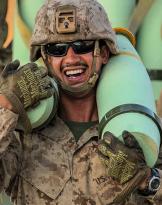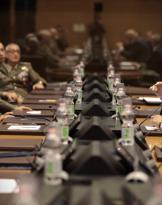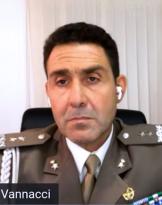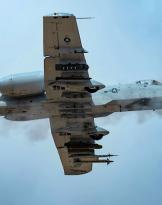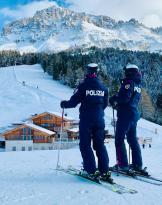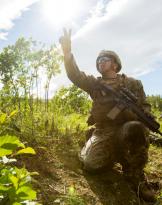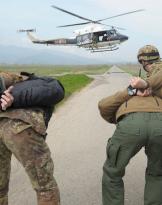Illegal immigration is closely linked to the presence, on our territory, of foreign criminal organizations, the Nigerian mafia (in primis).
It is not the Minister of the Interior, Matteo Salvini, who recounted it in one of his political interventions, but it is the Anti-Mafia Investigative Directorate who wrote it, in several passages, and in a clear, clear and unequivocal manner in his report concerning his own activity carried out and the results achieved in the second half of the 20181.
Meanwhile, in the voluminous relationship (developed in almost six hundred pages: 567, to be precise), a substantial part (from page 506 to page 542), both dedicated to a focus precisely on Nigerian organized crime in Italy, as proof of the now overt presence of the latter in our country and its very high rate of ferocity and danger.
Well, in this analysis, which is necessarily synthetic, first of all, a premise on the investigative method is highlighted (which, borrowed from the contrast with the local mafias, has perhaps been lacking in some Italian realities for too long and, in some of them, still unused) , which should characterize the modus operandi et cogendi of investigators, important to understand the following reasoning:
...in this case of great importance is the careful pre-understanding of a crime, such as the Nigerian one, which, if read for individual cases, is destined to affect only the perception of the security of a limited territorial area. Instead, it is necessary to know how to read the phenomenon as a whole, to know it from within - and in this a great contribution has come, in recent years, from some Nigerian justice collaborators, as well as from technical activities - sometimes connecting events to reality territorial between them also very distant. Knowing how to understand it, therefore, as a real macro-phenomenon, whose analysis cannot ignore the knowledge of its origins and its international projections: exactly in the same way in which we have learned to understand and face the 'ndrangheta and the others historic autochthonous mafias, backed by an investigative know-how consolidated over time and particularly competitive internationally (page 506).
A global, systemic and systematic vision that, as we said before, does not always seem to be still present in some prosecutor's offices and that, moreover, was the one that led the same Falcone, Borsellino, Chinnici and all the magistrates of the famous pool to be able to instruct the historical maxi-process of the 1986, to harshly criticize the colleagues who had preceded them, because they are not able to see the criminal episodes as a whole - which would have allowed them to notice the criminal organization behind them - but to have them considered as stand-alone, thus allowing the mafias to grow and branch out in all the ganglia of society.
 A mistake that, perhaps, has been made for some time even with this new, terrible phenomenon, perhaps with the coexistence and connivance of a certain political party. Who knows.
A mistake that, perhaps, has been made for some time even with this new, terrible phenomenon, perhaps with the coexistence and connivance of a certain political party. Who knows.
However, without letting go to considerations of another nature, and remaining anchored to the technical data of the report in question, proceeding further, on page 511, we read that:
In view of the marked transnational vocation of the Nigerian criminal organizations, Italy, also for the strategic position that it plays in the Mediterranean basin, is obviously interested by the illegal permanent or transit activities in the illicit sectors in which this criminal organization is involved. Permeated by a strong association, in which diverse centers of interest interact, Nigerian crime has developed outside the mother country, exploiting migratory flows.
Subsequently, on the following page, it is reported that: Among the Nigerian criminal organizations operating in Italy, a violent conflict has emerged over the years between more structured groups operating within waterproof and self-referential systems, compared to others based on bandit type models, sometimes making even certain episodes difficult to interpret. of violence recorded in the streets of our cities. Obviously there is a link between the irregular migration phenomenon, human trafficking and sexual exploitation. In this context the criminal organization controls the criminal activity in all its phases, from recruitment to sending women to countries outside Africa and to putting them on the road. A criminal process implemented through specific methods and phases.
Continuing, we read, again, that Illegal immigration has therefore proved to be a favorable opportunity for the perpetration of very serious crimes such as the trafficking of persons mainly for the purpose of sexual exploitation, committed in most cases to the detriment of girls at a very young age.
Moreover, the authors of the report do not fail to recall that Human trafficking constitutes a transnational crime, in this sense defined by the art. 3 of the Additional Protocol to the United Nations Convention against Transnational Organized Crime to Prevent, Suppress and Punish Trafficking in Persons, in particular Women and Children. Here too it is easy to fall into the political but also legal temptation to underline the total myopia of our governments, prior to the current one, as well as of the European institutions themselves or of the United Nations itself which, beyond beyond sporadic façade declarations, and of some purpose included in the aims of some international mission, they never seem to have been able (or perhaps wanted to) to effectively counter such situations.
 Continuing, on page 513, it is written that According to what emerged during recent surveys, coordinated by various national district prosecutors, the trafficker of trafficking victims is part of a transnational criminal "network" rooted in the countries of origin of the migratory flows, where situations characterized by extreme poverty or unstable socio-political contexts become factors of attraction for criminal organizations dedicated to such illegal activities. These are partnerships structured in "cells" operating in the individual countries affected by the criminal "supply chain", each of which intervenes if necessary, dealing with a specific "phase" that characterizes the trafficking. A very important passage, which highlights the capillarity of these organizations which, as we recall immediately, join the trafficking drug dealing: The trafficking sector is closely connected with that of drugs: Nigerian crime seems to opportunistically use the same channels and the same structures for the different criminal "services", operating for some time now, as a supplier, mediator and organizer of drug trafficking in many European and non-European countries.
Continuing, on page 513, it is written that According to what emerged during recent surveys, coordinated by various national district prosecutors, the trafficker of trafficking victims is part of a transnational criminal "network" rooted in the countries of origin of the migratory flows, where situations characterized by extreme poverty or unstable socio-political contexts become factors of attraction for criminal organizations dedicated to such illegal activities. These are partnerships structured in "cells" operating in the individual countries affected by the criminal "supply chain", each of which intervenes if necessary, dealing with a specific "phase" that characterizes the trafficking. A very important passage, which highlights the capillarity of these organizations which, as we recall immediately, join the trafficking drug dealing: The trafficking sector is closely connected with that of drugs: Nigerian crime seems to opportunistically use the same channels and the same structures for the different criminal "services", operating for some time now, as a supplier, mediator and organizer of drug trafficking in many European and non-European countries.
For reasons of space, other points of analysis and reflection are omitted here which, interesting for understanding the phenomenon of Nigerian criminal organizations, would only reinforce what we wanted to highlight here: that is, to return to the point of departure, the close link between irregular immigration and the presence, on our territory, of foreign and, in particular, Nigerian criminal organizations. One of the most violent and dangerous in the world. With all due respect to those who wish to affirm the contrary, of those who incite indiscriminate reception, of those who attribute to a political ideology the denunciation of the absurdity, for the consequences so far recalled, of an uncontrolled immigration and "regardless", without noticing ( for malice, dictated by economic interest, or negligence) that, instead, it is objective data, whose underestimation leads to victims being claimed: foreign (Nigerian, first of all, limiting themselves to the subject matter: see the numerous news articles) or Italians (Pamela Mastropietro, to cite the most striking and atrocious example, whose photographs - depicting a body dislocated surgically, stripped, bloodless, removed from all internal organs - well depict the ferocity that certain people are capable of, enter Italy on barges).
 The problem of immigration - as we have said on other occasions - is tackled at three hundred and sixty degrees: without hypocrisy and by evaluating the pros and the cons. Perhaps, for example, by developing humanitarian corridors, evaluating hotspots in Tunisia, which has also received substantial funding, even recently, from the European Union for the development of its social and economic system (well 305 million euros)2: but how, is it not an unsafe port?) and that would allow, as already demonstrated by previous experiences, to be able to guarantee the refuge in Italy and then, from there, also in the other countries of our continent, to those who really need it , with a clear confidence both of those who welcome and of those who are welcomed.
The problem of immigration - as we have said on other occasions - is tackled at three hundred and sixty degrees: without hypocrisy and by evaluating the pros and the cons. Perhaps, for example, by developing humanitarian corridors, evaluating hotspots in Tunisia, which has also received substantial funding, even recently, from the European Union for the development of its social and economic system (well 305 million euros)2: but how, is it not an unsafe port?) and that would allow, as already demonstrated by previous experiences, to be able to guarantee the refuge in Italy and then, from there, also in the other countries of our continent, to those who really need it , with a clear confidence both of those who welcome and of those who are welcomed.
What better opportunity for this country to demonstrate the trust placed in it, on pain of revoking the large sum of money given?
By the way: someone inform Saviano. The barges, or some ships, in the current system, often, yes ... they are real taxis: criminality.
2http://www.ansamed.info/ansamed/it/notizie/stati/tunisia/2019/01/23/tuni...
Photo: EUNAVFOR MED / State Police



